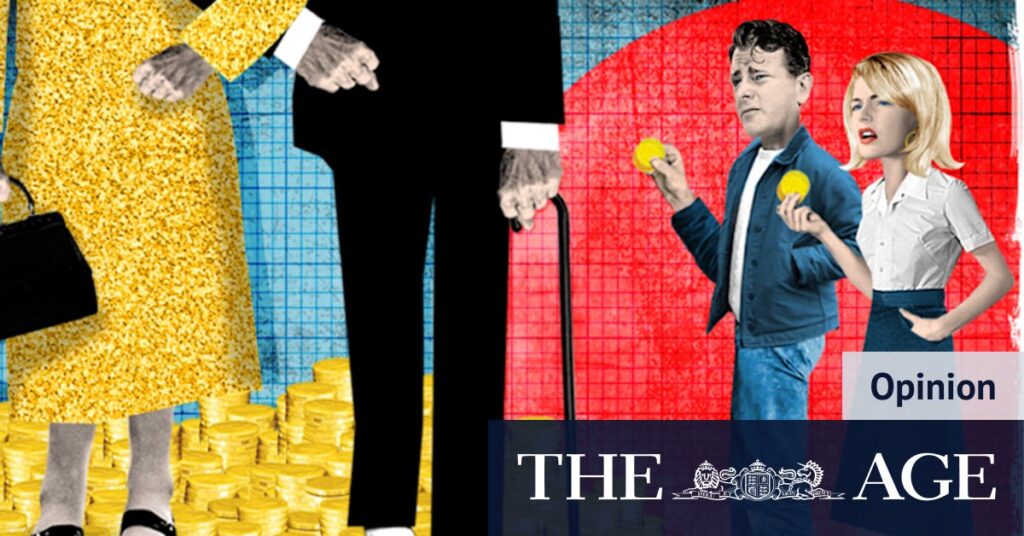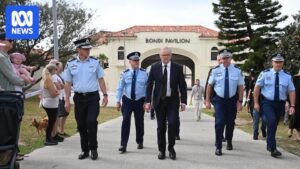
In a striking revelation, recent analyses indicate that post-tax income and pension payments for older Australians have surged relative to the overall population, creating a significant economic disparity between generations. While older Australians now enjoy a post-tax income one-third higher than those aged 18 to 30, this gap was not always so pronounced. The shift has been attributed to increased taxation on younger individuals and reduced tax burdens coupled with larger income streams for the older demographic.
Historically, retirees relied heavily on the age pension for financial support. The introduction of superannuation aimed to provide dignity in retirement, reducing dependence on government aid. However, this system has evolved beyond its original intent. In many cases, it has become a tool for estate planning, tax management, and wealth transference. Today, the average retiree in their 60s, drawing tax-free income from superannuation alongside a portion of the age pension, often matches the income of an average working 40-year-old, despite facing different financial pressures.
Housing Market Challenges for Younger Generations
One of the most significant financial pressures facing younger Australians is the challenge of entering the housing market. In 1990, purchasing a median-priced house in Sydney required nearly seven times the median income. This figure has now escalated to over 13 times the median income, contributing to a dramatic decline in home ownership among those under 35.
This decline in home ownership is linked to a decrease in fertility rates among younger couples, as financial instability and the burden of hefty education debts make it difficult to save for a home deposit. The economic landscape for younger Australians is further complicated by a tax and welfare system that favors asset-rich individuals who can move their wealth into low- or no-tax asset classes.
The Broken Intergenerational Contract
According to economic experts like Breunig and his team, the current tax and transfer system is unsustainable. They argue that the system disproportionately benefits older Australians, who have successfully influenced tax policies over the past three decades. The growing obligations to an expanding cohort of older Australians, coupled with shrinking resources, highlight a broken intergenerational contract.
“The current tax and transfer system, with its growing obligations to the growing cohort of older Australians and shrinking resources from which to meet those obligations, is spiralling down and unsustainable,” Breunig and his team assert.
Potential Solutions and Economic Implications
Addressing this imbalance presents a complex challenge. One potential solution involves reducing federal spending, particularly on the age pension, which is the second-largest expense in the federal budget at $66 billion annually. Other significant expenses include the National Disability Insurance Scheme ($51 billion), aged care services ($41 billion), medical benefits ($35 billion), and state hospital assistance ($34 billion).
Alternatively, increasing taxes on older Australians could be considered, although this group represents a politically influential demographic that has historically shaped the tax system to their advantage. The recent economic roundtable discussions focused on strategies to enhance national living standards while addressing budgetary constraints, with traditional tax reforms like company tax and GST taking center stage.
Looking Ahead: Navigating Economic Equity
The path forward requires a delicate balance between ensuring economic equity and maintaining political feasibility. As Australia grapples with these challenges, the need for comprehensive tax reforms that consider the interests of all generations becomes increasingly clear. Policymakers must navigate the complexities of an aging population, rising living costs, and the economic aspirations of younger Australians to forge a sustainable future.
The conversation around economic disparities and generational equity is far from over. As discussions continue, the focus remains on creating a fairer system that supports both the young and the old, ensuring a prosperous future for all Australians.






